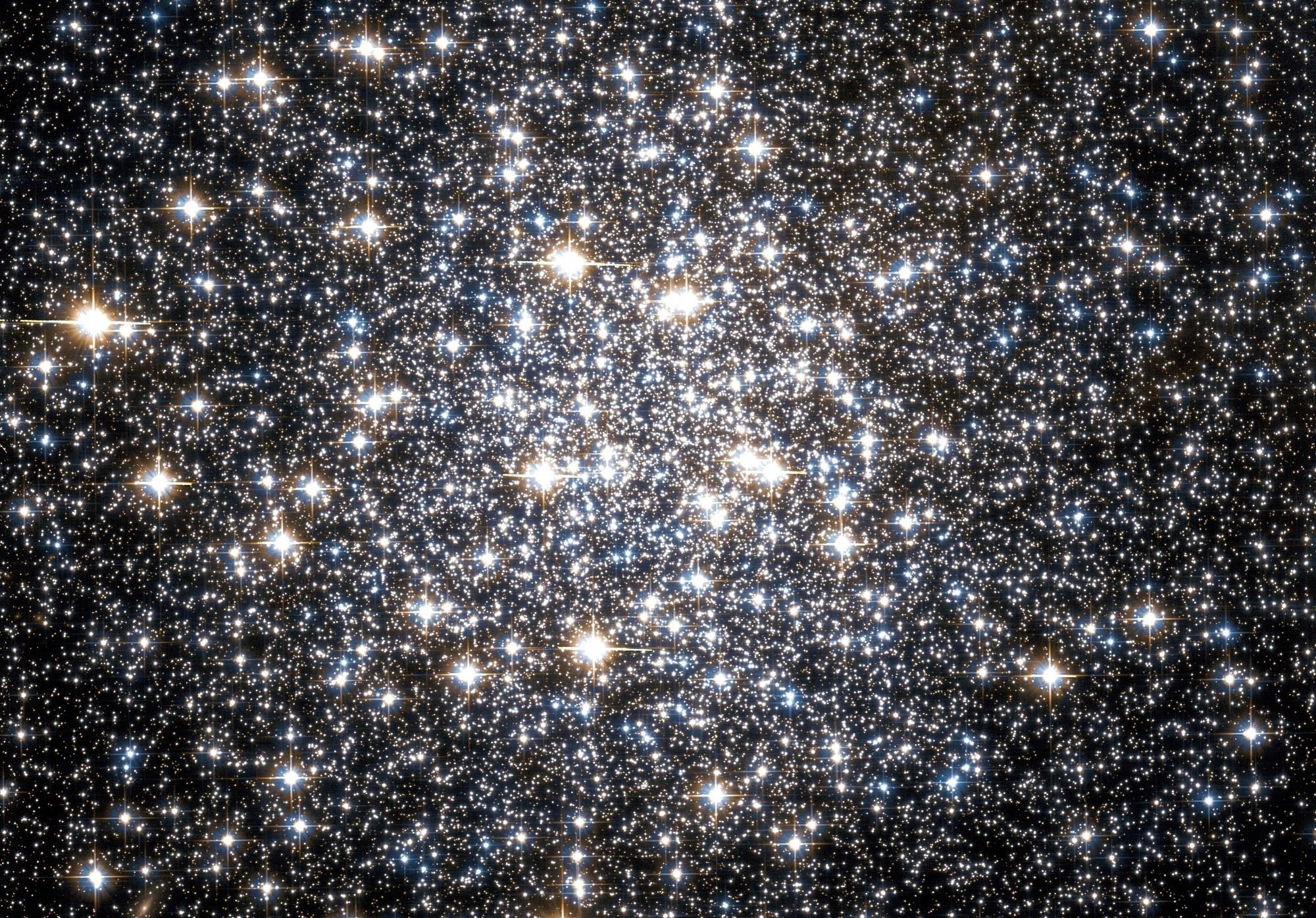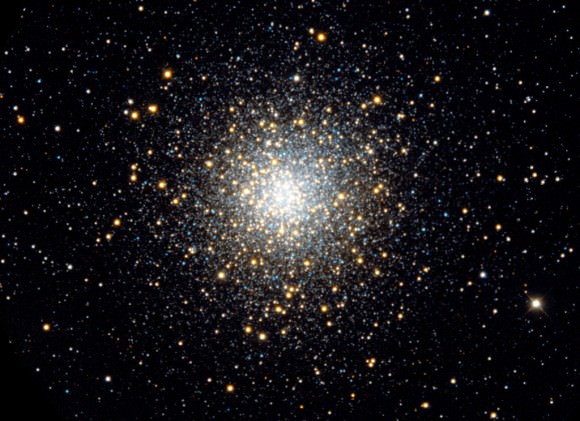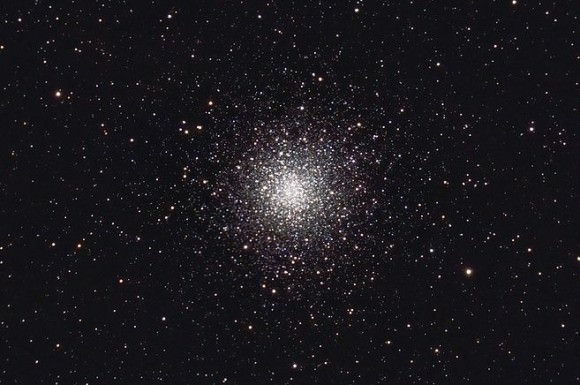Welcome to another installment of Messier Monday! Today, we continue in our tribute to our dear friend, Tammy Plotner, by taking a look at Messier Object 10.
In the 18th century, French astronomer Charles Messier noted the presence of several "nebulous objects" in the night sky while searching for comets. Hoping to ensure that other astronomers did not make the same mistake, he began compiling a list of 1oo of them. This list came to be known as the
Messier Catalog
, and would have far-reaching consequences.
In addition to being as a major milestone in the history of astronomy and the study of Deep Sky Objects. One of these objects is known as Messier 10 (aka. NGC 6254), a globular cluster that is located in the equatorial constellation of
Ophiuchus
. Of the many globular clusters that appear in this constellation (seven of which were cataloged by Messier himself) M10 is the brightest, and can be spotted with little more than a pair of binoculars.
Description:
The M10 cluster is one of the closer objects to the center of our galaxy, located just 5 kiloparsecs (16,000 light years) from the Galactic Center, and about 14,000 light years from Earth. Measuring some 83 light-years in diameter, this cluster has diffuse edges that reach beyond its much-brighter core, which measures roughly 35 light-years across. On average, the cluster is very bright, with a visual magnitude of 6.6.
The core region is home to many binary stars, which tend to migrate towards the core due to their greater mass. Binary stars are estimated to make of 14% of the core region of the cluster, while making up just 1.5% of the outlying regions. Similarly, the core region contains a concentration of interaction-formed blue straggler stars - a type of main sequence star common to clusters that are particularly bright - as well as four variable stars.
[caption id="attachment_128145" align="aligncenter" width="580"]
The equatorial constellation Ophiuchis. Credit: iau.org
[/caption]
In terms of the abundance of elements other than hydrogen and helium, Messier 10 is moderately metal–poor. The abundance of iron, is only 3.5% of the abundance found at the surface of the Sun. In addition, it also appears in close proximity to another object in Ophiuchus, the globular cluster M12. Although they seem to be close together and close in size, the M10/M12 pair are actually separated by some 2,000 light-years.
M10 is a also a much more concentrated globular showing a brighter core region to even the most modest of instruments. This compression of stars is what classifies one type of globular cluster from another, and M10 appears brighter, not because of this compression, but because it is about 2,000 light-years closer.
Traveling away from us at 69 kilometers per second, 532 stars have been measured for their absolute proper motions, and we know that two of them are population II cepheids. Why is knowing proper motion so important? So we can study the evolution. According to studies done on M10 by Oleg Y. Gnedin (et al):
[caption id="attachment_128253" align="aligncenter" width="580"]
Image of M12, obtained using the 1-meter telescope of the Hoher List Observatory near Bonn, Germany. Credit: messier.seds.org/Sven Kohle/Till Credner
[/caption]
History Of Observation:
M10 was discovered by Charles Messier on May 29, 1764. Said he:
Although William Herschel would be the first to resolve it into stars, it is the words of Admiral Symth which most accurately reflect how M10 truly looks in the average telescope:
'A beautiful round nebula. It may be seen, with attention, by a telescope of three feet in length.'
[caption id="attachment_128249" align="aligncenter" width="580"]
Messier 10 imaged using an amateur telescope. Credit: Wikipedia Commons/Hewholooks
[/caption]
Locating Messier 10:
Using binoculars, M10 is a same-field binocular pair with globular cluster M12, which is located about half the width of a fist west of Beta Ophiuchi. M10 is the southernmost of this pair and will appear brighter in the night sky. To help orient yourself to the correct area, identify Beta Scorpii as your first starhop marker. Slightly more than a fist-width north, you will see the twin "Yed" stars (Delta and Epsilon, traditionally known as Yed Prior and Yed Posterior).
To the northeast are another close, bright pairing - Beta and Gamma Ophiuchi. M10 and M12 are about 1/3 the distance between the twin Yeds and the Beta/Gamma pair. Both are bright enough to be seen as a small, fuzzy patch in the finderscope.
And for your convenience, here are the quick facts about Messier 10:
- Object Name
-
Messier 10
- Alternative Designations
-
M10, NGC 6254
- Object Type
-
Class VII Globular Cluster
- Constellation
-
Ophiuchus
- Right Ascension
-
16 : 57.1 (h:m)
- Declination
-
-04 : 06 (deg:m)
- Distance
-
14.3 (kly)
- Visual Brightness
-
6.6 (mag)
- Apparent Dimension
-
20.0 (arc min)
Whether you resolve it or not - the beauty is finding it!
We have written many interesting articles about Messier Objects here at Universe Today. Here's Tammy Plotner's
Introduction to the Messier Objects
, ,
M1 – The Crab Nebula
,
M8 - The Lagoon Nebula
, and David Dickison's articles on the
2013
and
2014
Messier Marathons.
Be to sure to check out our complete
Messier Catalog
. And for more information, check out the
SEDS Messier Database
.
 Universe Today
Universe Today



